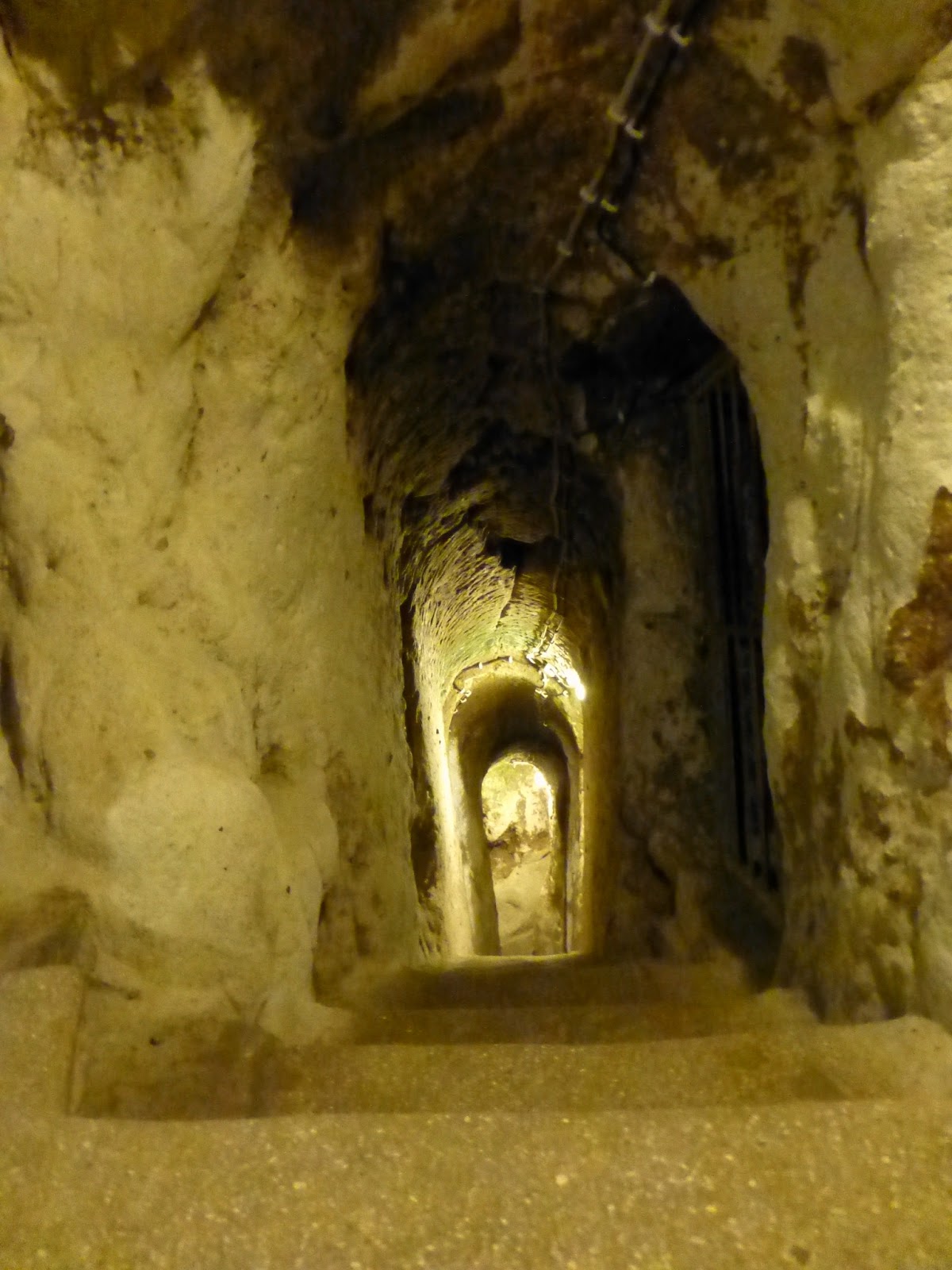Turkey
Cappadocia
Cappadocia is a region in central Turkey known for its unique chimney rock geological formations. We decided on the town of Goreme after Meredith and her friend Leyla had stayed there for a few days last year (we also chose the same cave hotel).
The trip from Konya consisted of a three hour bus ride to the city of Nevshier, then taking a local bus to Goreme. Our hotel host came and retrieved us by a car to take us to the Koza Hotel. Soon after we were quickly settled into our cave room.
The area sort of reminds us of Bryce Canyon. The rock formations, the erosion, the natural color tones all seem familiar. But what’s happened here is that sometimes, basalt rocks protected the base of the rock structure while erosion took away its surrounding, leaving stand-alone pillars with a boulder as a hat. Much of the area looks like a Flinstone or Smurf movie set.
The Koza Hotel is a family run business. After we got unpacked, we met them all and were offered a cup of tea. The family spent many years in the Netherlands and only moved back to Turkey a few years ago. The father built much of the hotel and its furnishings. He's a very talented individual with quite an artistic eye. We told them that we were interested in seeing the local sights, look at carpets and check into the local pottery. Naturally they had family and friends in all of these areas of interest.
Pretty soon we found ourselves in a pottery studio/store, one like I have never quite seen before. Without going into too much detail, it was one of those learning lessons that are a pleasure to experience. We learned about how pottery is made, how artists sketch and apply the artwork and colors, glazing techniques and baking the pottery in the oven.
 |
| Here the potter sees if the lid he made fits the rest of the bowl. It did. |
Needless to say, we came away knowing a lot more about pottery and with a little less cash. We ended up purchasing one of the old styled wine decanters with a circular shape, the larger ones fitting an arm through it.
In the morning I was awakened early around 6:10 a.m. by a loud whooshing blow. I knew instantly what it was - a hot air balloon coming by. I jumped out of bed, put on some clothes, got my camera and walked up to one of the several terraces. I could see a giant, colorful balloon floating along just feet from the chimney rock at our hotel. Looking at the horizon, I could see dozens more all over the sky. It was an amazing sight.
 |
| View of the balloons from our hotel in the early morning |
For the rest of the day, we decided on renting a 125cc scooter and riding through areas that we’d never get to otherwise. We visited an ancient Caravansarai that dates back to 1249. These were rest stops or inns along the Silk Route for travelers and merchants. The one we stopped at was beautifully restored. You could just imagine how the merchants would sit there sipping their tea, doing business, staying for a couple of days to make their business deals.
 |
| The entrance to the Caravansarai |
The rest of the day we proceeded along a circular, clockwise route to Cavusin, Avanos, Zelve, Urgup, Uchisar and back home to Goreme.
 |
| Cavusin |
 |
| View from above the ruins |
 |
| One of the churches inside the ruin |
 |
| Zelve and the Fairy Chimney rocks |
 |
| Uchisar and view of the castle |
 |
| Our transportation for the day |

















































